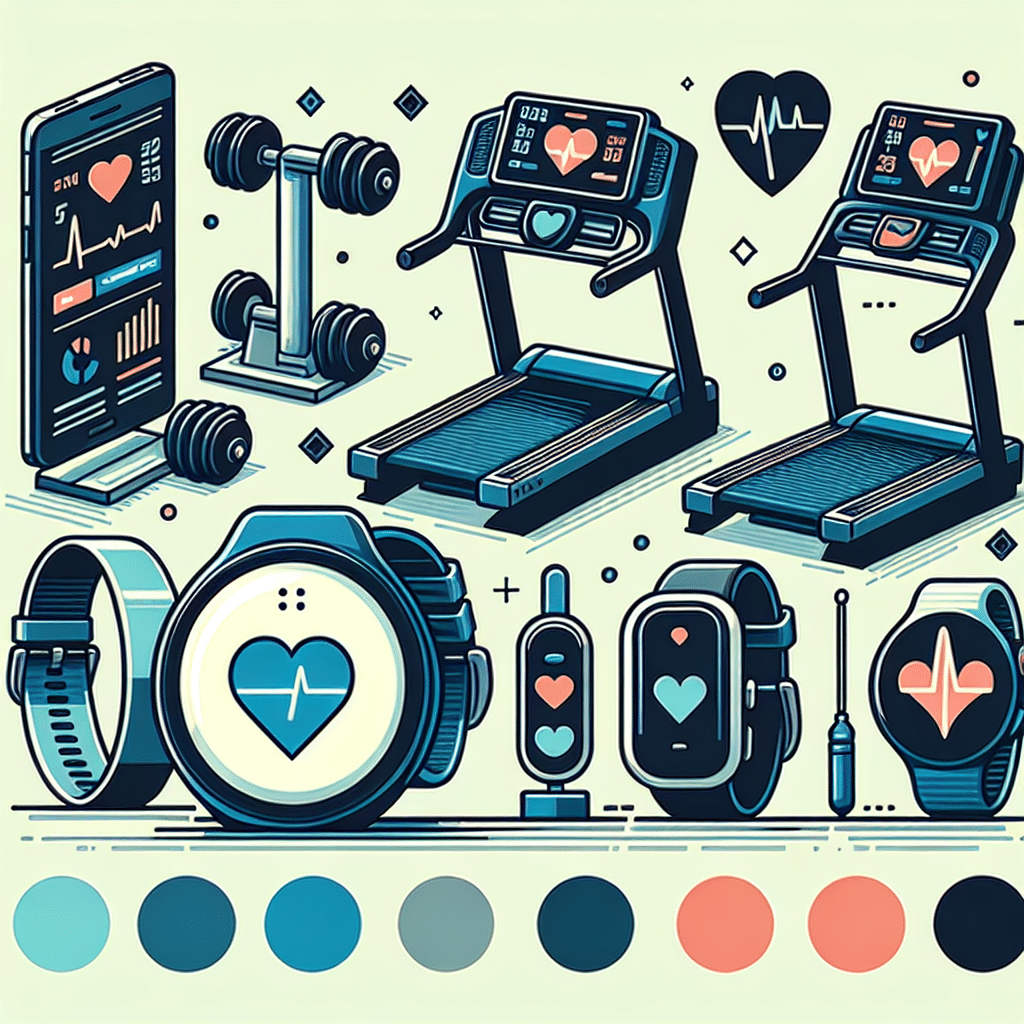Understanding Heart Monitors
Heart rate monitors (HRMs) have emerged as essential tools for fitness enthusiasts and athletes. By providing real-time data on heart activity, these devices help users optimize their workouts, track their progress, and improve cardiovascular health. There are various types of heart monitors available, each with distinct features suited for different needs.
Types of Heart Rate Monitors
-
Chest Strap Monitors
Chest strap monitors are the most accurate type of heart rate monitors. They use electrocardiogram (ECG) technology to measure heart rate directly from the heart’s electrical signals. Typically, these devices are worn around the chest and paired with a smartwatch or smartphone to display heart rate data. The main advantage is their accuracy, making them ideal for high-intensity training. However, some users may find them uncomfortable over long durations. -
Wrist-Based Monitors
Wrist-based monitors are more convenient for everyday use. They use optical sensors to detect blood flow and calculate heart rate. Many fitness trackers and smartwatches feature this technology, allowing for continuous monitoring throughout the day. Although they tend to be less accurate during vigorous exercise compared to chest straps, advances in technology have significantly improved their reliability. -
Arm and Finger Monitors
Less common than chest and wrist monitors, arm and finger devices also use optical sensors. These are often incorporated into portable medical devices for specific health monitoring purposes. They may not be as widely adopted in fitness circles, but they provide an alternative for individuals who find traditional monitors uncomfortable.
Features to Consider
When choosing a heart rate monitor for gym workouts, it’s essential to evaluate several features:
-
Accuracy
Accuracy is paramount for effective training. Chest strap monitors generally provide the most reliable measurements. However, reliable wrist-based options are increasingly closing the gap. -
Heart Rate Zones
Many heart monitors allow users to set heart rate zones for various training intensities, such as fat burning, cardio, and peak training. Being able to visualize which zone you’re in during exercise helps tailor workouts to specific fitness goals. -
Connectivity
Compatibility with apps and other devices can enhance the utility of a heart monitor. Seek monitors that easily sync with fitness apps to log workouts, track progress, and analyze performance data. -
Battery Life
Battery longevity can be a crucial consideration. Some chest straps need periodic battery replacement, while others are rechargeable. Wrist-based monitors often have favorable battery life due to their multi-functionality.
Benefits of Using a Heart Rate Monitor
-
Optimized Workouts
Heart rate monitors allow users to tailor their exercise routines based on real-time heart rates. By staying in the desired heart rate zone, individuals can maximize their workout efficacy and caloric expenditure. -
Improved Endurance
Monitoring heart rates helps in building aerobic endurance. Athletes can gradually increase their intensity levels without overexerting themselves, fostering long-term cardiovascular improvements. -
Health Monitoring
Continuous heart rate monitoring can provide insights into overall health, helping to detect abnormal heart rhythms or overtraining signs. Early intervention can be crucial in preventing major health issues. -
Motivation
Seeing real-time feedback can be incredibly motivating. Heart rate monitors provide instant gratification by displaying the results of hard work and effort, encouraging individuals to push further with their fitness goals.
How to Use Heart Rate Monitors
-
Wearing the Device: Ensure snug fit, especially with chest straps, to get accurate readings. Wrist-based monitors should be worn above the wrist bone for optimal sensor contact.
-
Setting Up: Before starting a workout, configure heart rate zones in the accompanying mobile app or device settings. Customizing these settings allows for better-timed training.
-
Post-workout Analysis: After exercising, review your heart rate data for insights into performance trends. Analyzing this data can inform future workout adjustments, identify strengths, and pinpoint weaknesses.
Popular Brands and Models
-
Polar H10: This chest strap model is known for its accuracy and comfort, featuring Bluetooth and ANT+ connectivity, making it compatible with various apps and devices.
-
Garmin Forerunner Series: These wrist-based monitors combine GPS features with heart rate monitoring, ideal for runners. They also track recovery metrics.
-
Wahoo Tickr: Offering a budget-friendly chest strap option that connects to multiple devices, the Tickr is known for its ease of use and versatility.
-
Apple Watch Series: Known for its smartwatch capabilities, the Apple Watch offers wrist-based heart rate tracking with advanced features like ECG monitoring and fitness tracking.
-
Fitbit Charge: A popular fitness tracker that provides heart rate data along with multiple health metrics. Its extensive app ecosystem allows detailed workout tracking.
Tips for Choosing the Right Heart Monitor
-
Assess Your Fitness Level: Beginners might lean towards wrist monitors for ease of use, while advanced athletes may prefer chest straps for high-intensity training accuracy.
-
Consider Your Workout Environment: If you’re into activities like swimming, look for waterproof models. Many brands now offer robust options for water-based activities.
-
Budget: Prices can range significantly. Determine features you genuinely need versus those that are nice to have, helping you land on a model that fits your budget.
Maintenance of Heart Rate Monitors
To ensure longevity and accuracy, regular maintenance of heart rate monitors is crucial:
-
Clean Sensors: For chest straps, routinely wash the strap and clean the sensor with a damp cloth to remove sweat and dirt build-up.
-
Battery Care: Monitor battery life and replace or recharge as needed. For rechargeable models, fully charge them if used infrequently.
-
Software Updates: Keep firmware and app software up to date for optimal performance and new features.
Conclusion
Heart rate monitors have revolutionized how fitness enthusiasts engage with their workouts, providing invaluable insights and data for improved performance. By understanding various types of heart monitors, their benefits, key features, and maintaining them properly, users can elevate their fitness journey effectively.
